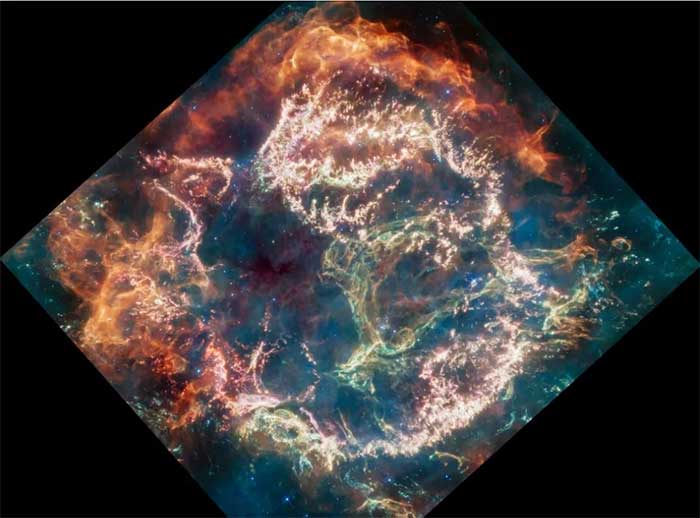The James Webb Space Telescope Helps Scientists Capture Stunning Images of the Remnants of the Youngest Supernova Ever Recorded.
The remnants of the supernova Cassiopeia A (or Cas A) were formed approximately 340 years ago, making Cas A the youngest known supernova remnant.

Image captured by the James Webb Space Telescope of the remnants of the Cas A supernova. (Photo: NASA/Space).
In its latest announcement, the James Webb Space Telescope has captured images showing the outer edges of materials expelled by the supernova, with orange and red hues representing warm dust emissions. The material from the exploded star is pushed into the surrounding gas and dust, causing it to heat up and glow, according to Space.
This enables scientists to study in greater detail what happens when a star dies. The material released from supernova explosions will spread throughout the galaxy, contributing to the formation of subsequent generations of stars and planets.
A supernova explosion that occurred 4.6 billion years ago led to the formation of the Sun and the planets in our solar system, paving the way for the creation of elements and living organisms.
Cas A provides insight into the early stages of planet formation, making it a subject of thorough research by astronomers to understand how stars explode.
While scientists have a grasp of how supernovae disperse the elements that form stars and planets, they still lack a clear understanding of how the early galaxies contained large amounts of cosmic dust. Researchers hope that studying the Cas A supernova remnant using the James Webb Telescope can help unravel this mystery.


















































